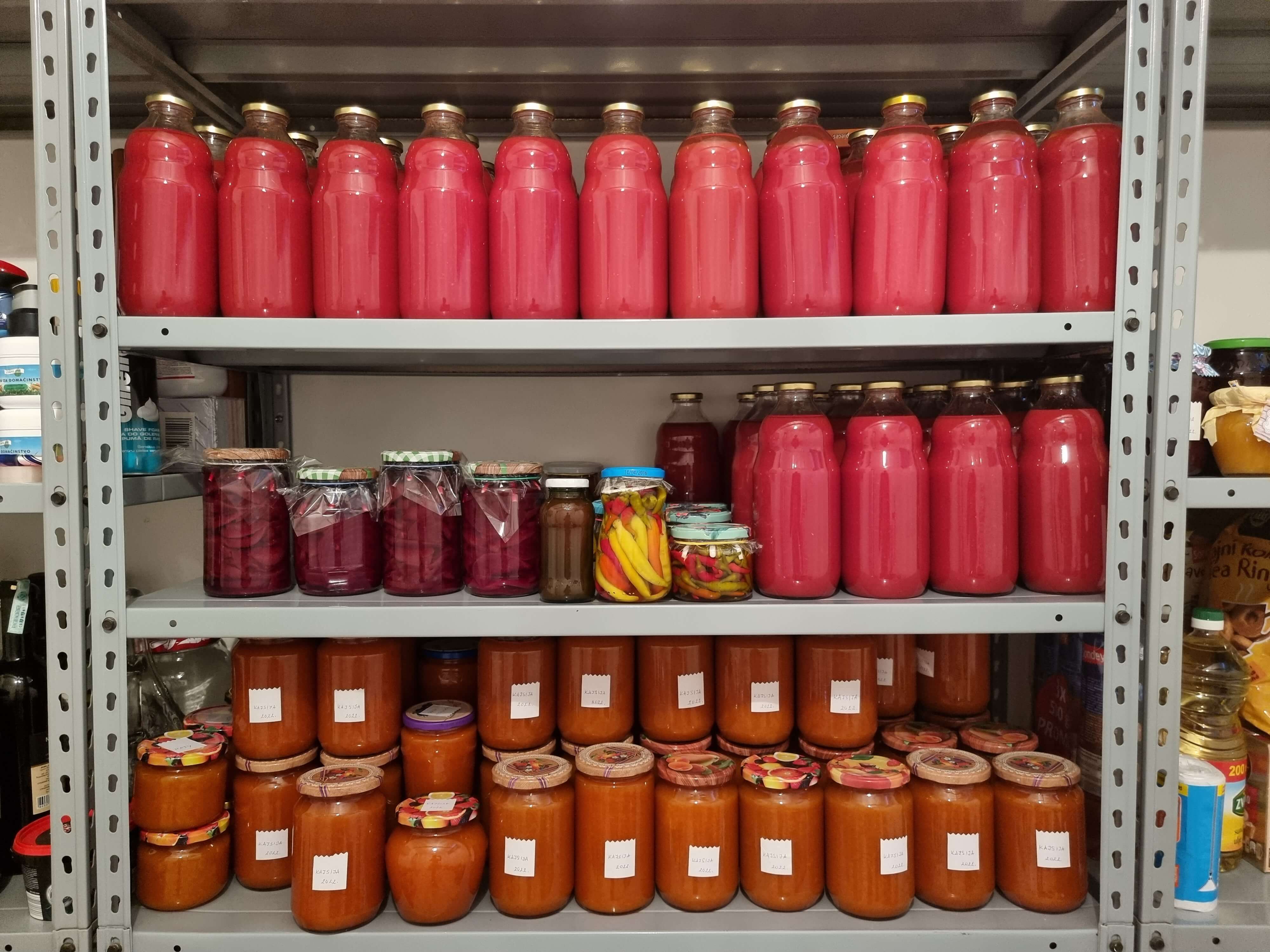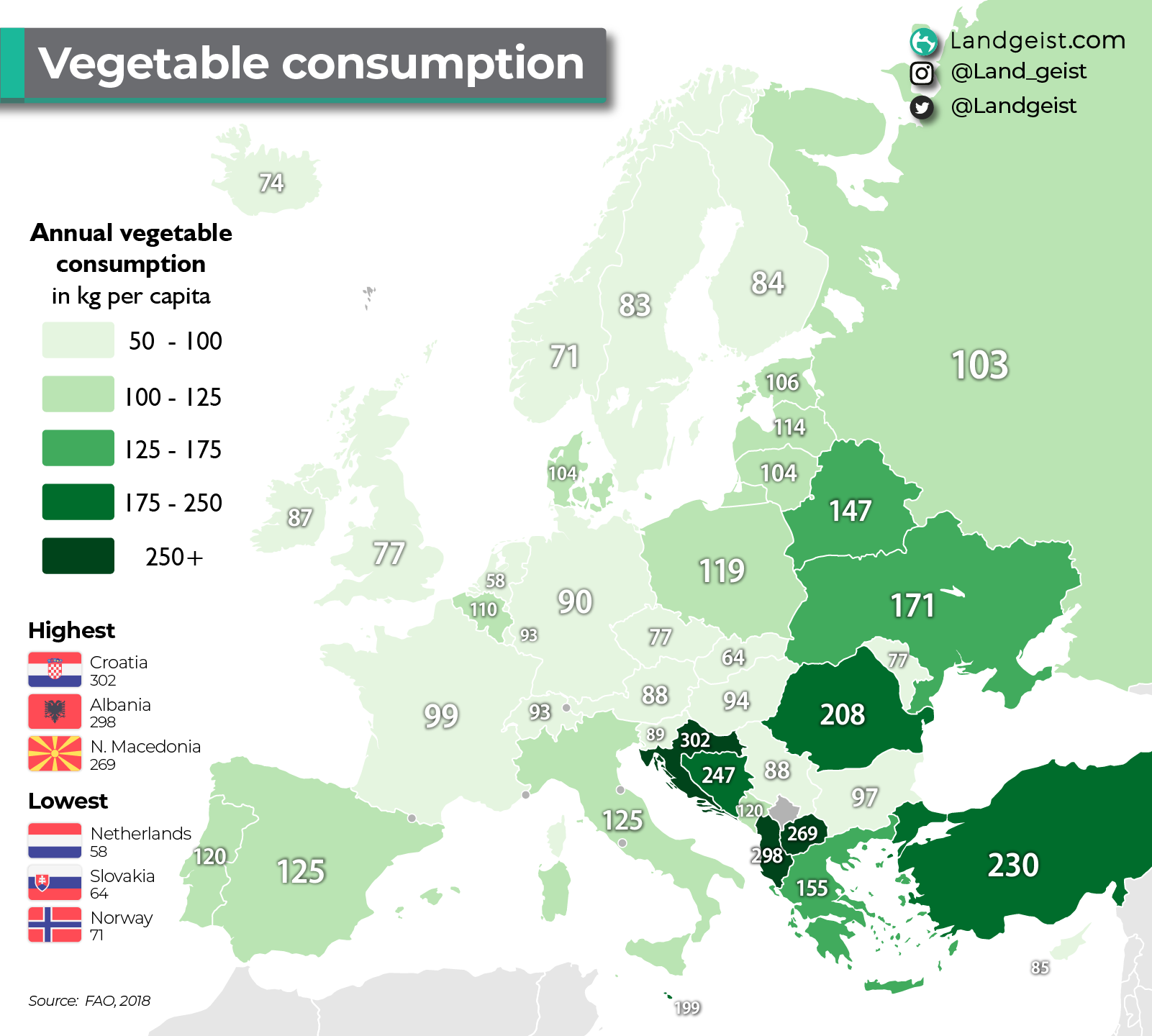Brace Yourselves in Slavonia: Winter is Coming and Zimnica is Now
August 18, 2022 – Picture this. You live in Slavonia. You are 16, it is the height of summer, plans include swimming in the Danube all day and partying all night. Guess again. There’s more important business. It involves plums, apricots, tomatoes, peppers, maybe beetroots. And it’s not a very weird salad. You are now old enough to make your own zimnica.

The winter staples - tomato passata, apricot and plum jam, pickled beetroots and peppers
While not a uniquely Slavonian event, zimnica, which is the Croatian word for anything that is kept specifically for the winter, plays an extremely important role in eastern Croatia. Preparing jars, bags, and dishes of fruits and vegetables for the winter is almost a form of art. Though things are different nowadays, winter in Slavonia used to be awfully long, cold, and dark, food was hard to come by, and it was of utmost importance to ensure that you preserved as much as you can. These days life is not as hard, and you can buy anything at any time, but the tradition does live on. Homegrown and homemade is always just so much better.
The preparations take place all summer long, as the fruits ripen, using various techniques. The most popular ones include pickling, jamming, and passing.
Pretty much any vegetable can be pickled using vinegar, salt, sugar, and water. The hierarchy of pickled vegetables is as follows:
1) Turšija is a mix of bell peppers, cauliflower, carrots, onions, and cucumbers, all pickled together in a plastic barrel. It takes top tier and gets served almost daily with all kinds of stews, meats, and even sandwiches, the adventure is in you.
1) Cabbage takes the same tier as turšija because it’s used to make a dish called sarma, which is the number one winter dish. It is almost mandatory to develop a love-hate relationship with it based on how often it’s made in Slavonian households.
2) Beetroots taste slightly sweeter, very red, never eaten while wearing white. Never frowned upon.
3) Solo whole bell peppers – neutral good, few hate them, few love them. Eaten if served, rarely an object of fear of missing out.
4) Other – like solo pickles, usually fetched when you run out of the good stuff.
5) Green tomatoes – now, that’s simply weird.

Just like any vegetable can be pickled, any fruit can be made into jam or rakija. Rare are jobs that are as annoying as picking up plums, apricots, peaches, pears, or apples from the ground and separating them into three buckets: good for jam, good for rakija, and good for nothing. The latter is usually completely rotten fruit, which is the most fun to pick up, and that bucket is taken to the back to be composted. The rakija bucket is dumped into a big barrel where the fruit is left to ferment, later distilled, and poured into the nicest bottles to be served on every occasion. Finally, the good fruit is eaten or used in cakes, but more importantly, jammed. There are a few different recipes for jam, depending on the fruit. The ubiquitous plum is treated as the queen and can be found in cakes, tašci, knedle, crepes, and on the breakfast table daily. Try the simple trick of cooking a large clay dish full of pitted plums with some sugar in the oven for a few hours and thank us later.
Now, you might wonder why one would go out and buy 250 kilograms of tomatoes on a Wednesday morning. Because that is market day, and the tomatoes went for a good price. And the ones from your garden were part of one too many salads. One of the most important ingredients of Slavonian cuisine is tomato sauce. Sunday lunch is unimaginable without a good broth, followed by the meat that was cooked in it served with some of the red velvety goodness. Tomato soup cures colds, cases of flu, and an array of other illnesses. It also makes for an incredibly easy and delicious dinner.
The process of preparing passata for the winter has a few steps. First, invite friends and family to help. This is a group job. Second, make sure that you’ve got some tools like a tomato press with a questionable origin, which you might or might not remember buying some 25 years ago. Even better if it’s your mother’s. Third, have some coffee. Fourth and final, work for 12 hours straight washing your tomatoes, cutting them, boiling, pressing, boiling again, bottling, and tucking for a cozy rest of 36-48 hours. Now you can rest easy knowing that you can store your 60 litres per household, getting through another long frosty winter in Slavonia.

Step no. 4
Traditional jam and tomato sauce are used in restaurants all over Slavonia and Baranja, where you can also try some of the dishes mentioned in the article, like tašci, sarma, and tomato soup. And that is just scratching the surface. Why aren’t you here?
How good is your knowledge of eastern Croatia anyway? Take the CROMADS test above - how many places do you recognise?
For more, make sure to check out our dedicated Lifestyle section.
Croatia Consumes More Vegetables Annually Than Any Other European Country
April 9, 2022 - According to statistics from the Food and Agriculture Organization of the United Nations (FAO), and compiled in a map made by Landgeist, Croatia consumes more vegetables per capita in a year than any other country in Europe.
Every day you learn something new about Croatia, and usually, they are things that you may never have imagined. When we talk about rankings, it is well known that Croatia is always among the first when it comes to the most beautiful countries in the world, the safest to walk at night, with the cleanest seas, among the best destinations for digital nomads, and much more.
However, would you have ever imagined that Croatia would be among the top when it comes to their consumption habits? According to statistics from the Food and Agriculture Organization of the United Nations (FAO), Croatia consumes more vegetables than any other European country. The Landgeist web portal compiled statistics from all European countries and created a map where it is possible to compare the annual consumption of kilos of vegetables per capita. According to these statistics, Croatia consumes 302 kgs of vegetables annually per capita.

Map: Landgeist.com
If you are Croatian, it may not surprise you that your country ranks among the top in vegetable consumption, especially if you look at your own plate during lunch both at home and in a restaurant. However, it is still a really remarkable fact that Croatia consumes more vegetables than any other European country considering that there is an agricultural tradition in the continent that goes back hundreds of years. If there is something worth highlighting, it is that Croatia's main competitors for this recognition are precisely countries of the Balkan region. In the second place ranks Albania with an annual consumption of 298 kilos of vegetables per capita, and in third place is North Macedonia, with an annual consumption of 269 kilos of vegetables per capita.
As Landgeist.com explains, the amount of vegetables one needs depends on age and sex. But on average, this is about 240 grams per adult per day or 87.6 kg per year.
''We can see that a bit more than half of the European countries meet this requirement. Cyprus, Czech Republic, Finland, Iceland, Moldova, the Netherlands, Norway, Slovakia, and Sweden do not meet the requirement, with the Netherlands consuming the smallest amount of vegetables in all of Europe'', states the web portal.
But how exactly does the FAO define vegetables? It probably matches mostly with what you would consider a vegetable. However, there are a few interesting exceptions. Potatoes are not counted as vegetables. Mushrooms, melons, and watermelons are. Yes, the FAO considers melons and watermelons vegetables. This is the FAO’s explanation: “This grouping differs from international trade classifications for vegetables in that it includes melons and watermelons, which are normally considered to be fruit crops. But, whereas fruit crops are virtually all permanent crops, melons and watermelons are similar to vegetables in that they are temporary crops”. If you want to see FAO's complete list on the classification of vegetables, click here.
In any case, congratulations to Croatia for continuing to stand out in lists that reflect healthy habits among its population!
For more, check out our lifestyle section.


